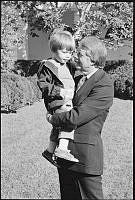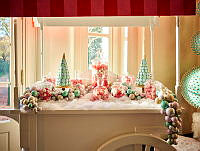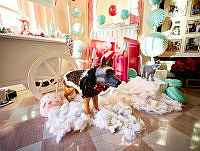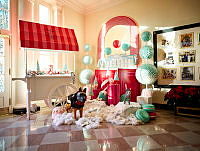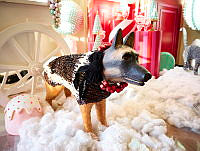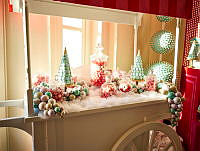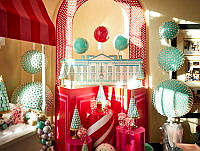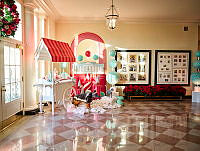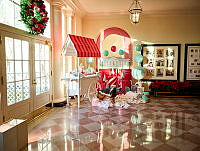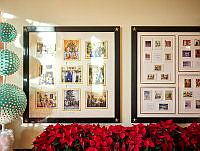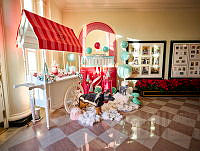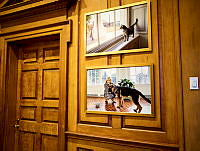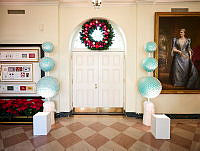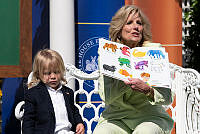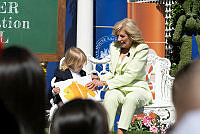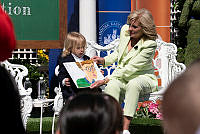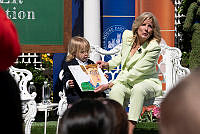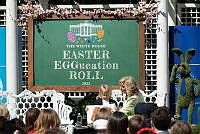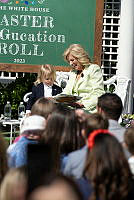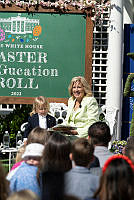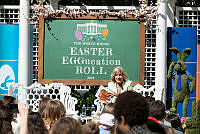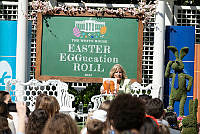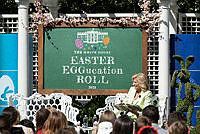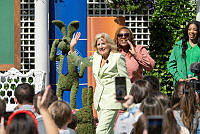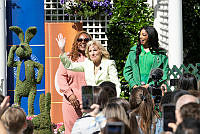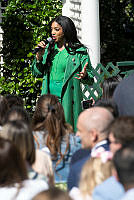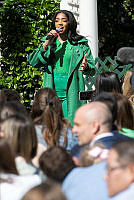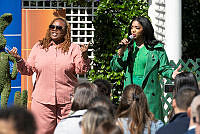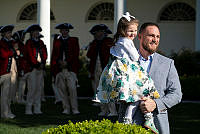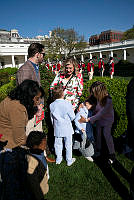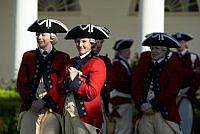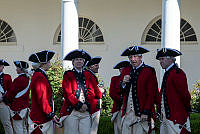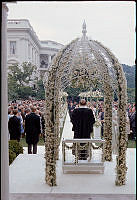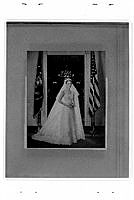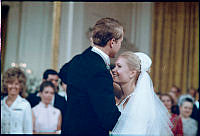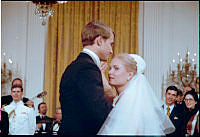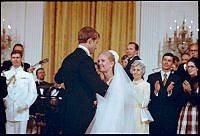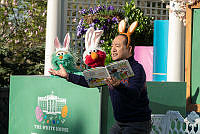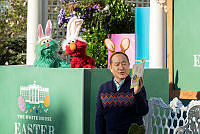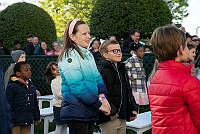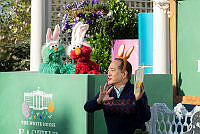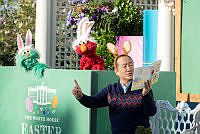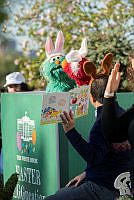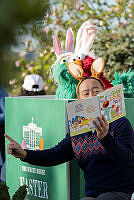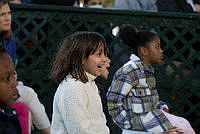A group of physicians and surgeons meeting in Washington 1891 was treated to a reception at the White House on the evening of September 24. President Benjamin Harrison moved among the gathering, and "extended a hearty grasp to each of the doctors."1 The event included "lively airs" by the Marine band, and a chance to wander through the conservatory and reception rooms.
The guests also had the exciting opportunity to experience the latest technology in the White House. In a front page article on September 25, 1891, the Washington Post reported that as a special treat for the doctors, "The East Room . . . was darkened, and the electric lights were turned on. The brilliant effect was greatly admired."2
Back in May, the Post had remarked on the progress of electrifying the Executive Mansion. "The men are still at work putting in the electric lights, and when they are through," the Post declared, "there will be nearly 1,000 incandescent lamps in the White House."3
One of the young men on the installation job had reported for duty on May 6. He was nineteen-year-old Irwin H. Hoover, known as "Ike." In his memoir, Hoover recalls,
"In due time I got down to the job of wiring and installing the electric appliances. The wonderful old chandeliers, built for gas, were converted into combination fixtures and the candle wall brackets were replaced by electric fixtures in the fashion of the time. . . . The Harrisons were all much interested in this new and unusual device that was being installed; so much so, that we got quite well acquainted with them."4
Hoover had been told he would not be needed after May 15, but the next day he received an offer of full-time employment as White House Electrician. He hesitated to take the job because the salary was so low, but accepted the offer and became, "like the electric lights, a permanent fixture."5
Ike Hoover spent 42 years working at the White House, advancing from electrician into the ushers' ranks. During the Taft administration he was appointed Chief Usher, and he held this job until he died in 1933.














